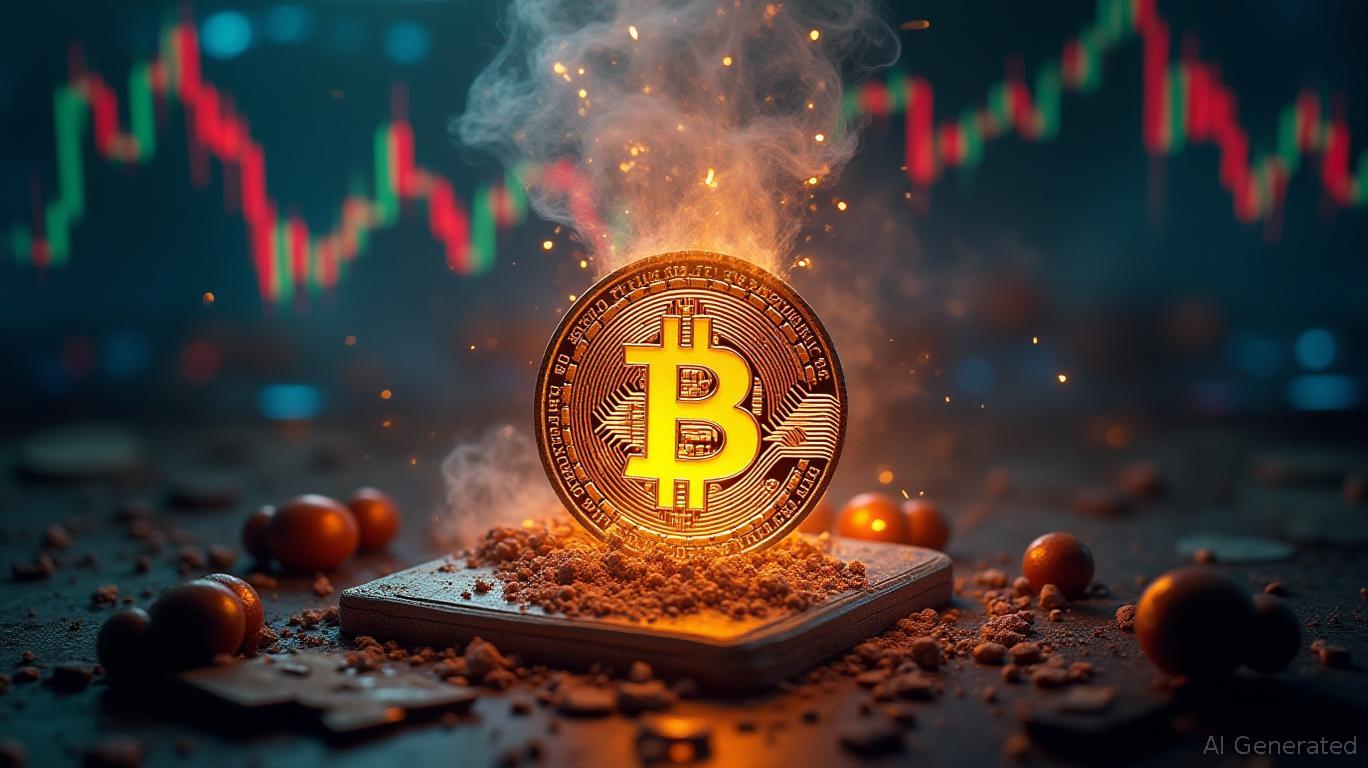South Korea Strives to Maintain Relations with Both U.S. and China as APEC Faces Ongoing Competition
- Trump's absence at 2025 APEC let China dominate as Xi promoted multilateral trade amid U.S.-China rivalry. - U.S.-South Korea $350B investment deal and China-U.S. tariff ceasefire highlighted shifting economic dynamics. - South Korea balanced bilateral ties while APEC nears consensus on protectionism and supply chain resilience. - China-ASEAN trade upgrades and AI partnerships underscored regional economic integration efforts. - Geopolitical tensions persist as APEC seeks fragile cooperation frameworks f
The 2025 Asia-Pacific Economic Cooperation (APEC) summit held in Gyeongju, South Korea, took place amid evolving global trade patterns. With U.S. President Donald Trump opting out of the main economic leaders' sessions, Chinese President Xi Jinping seized the opportunity to position China as a champion of open markets and multilateral cooperation. Trump's absence, following his earlier one-on-one meeting with Xi in Busan, highlighted the growing economic competition between the U.S. and China and drew attention to the region's attempts to manage the consequences.

Trump's shortened stay came after he concluded a controversial trade agreement with South Korea, which included tariff reductions in return for Seoul's commitment to invest $350 billion, as reported by
Xi's participation was a focal point at the summit, as his government used the event to push back against U.S. protectionism and reaffirm China's pledge to "uphold the multilateral trading system," according to
ABC News . ABC News also highlighted that Chinese representatives promoted cooperation on artificial intelligence regulation, demographic issues, and strengthening supply chains—key priorities for South Korea's APEC agenda. This approach fits with China's broader strategy to deepen economic links in the Asia-Pacific, as demonstrated by a newly enhanced China-ASEAN free trade pact signed by Premier Li Qiang just before the summit, according to MarketScreener .Other regional leaders took advantage of the changing environment. Canada's new Prime Minister Mark Carney met with Xi to push for greater trade diversification, with the goal of doubling exports to countries other than the U.S. over the next ten years. Talks centered on reducing tariffs for Canadian canola—a $5 billion sector facing a 75.8% Chinese tariff—and expanding opportunities for clean tech and critical minerals, according to
Meyka . Meanwhile, South Korean President Lee Jae Myung managed to secure a U.S. tariff cut in talks with Trump, while also holding separate discussions with Xi on economic collaboration, as Yonhap reported.The summit also saw movement toward collective agreements. After years of stalemate, APEC members were close to reaching a joint statement on issues like protectionism, digital standards, and supply chain risks, according to
Reuters . South Korean officials emphasized the need to avoid the deadlocks of 2018 and 2019, when U.S.-China disputes blocked unified declarations, as noted by U.S. News . Still, the anticipated declaration is likely to be less ambitious than previous versions, reflecting the differing priorities of member economies, according to Al Jazeera .Business alliances further highlighted the region's economic goals. Nvidia CEO Jensen Huang revealed new partnerships with Samsung, Hyundai, and SK Hynix to develop AI infrastructure, robotics, and autonomous vehicles, aiming to make South Korea a leader in future technology, according to
Republic World . Republic World also mentioned that Huang suggested U.S. authorities might soon permit AI chip sales to China again, though he acknowledged that Trump would have the final say on exporting advanced Blackwell chips.As the summit wrapped up, the combination of reduced U.S. engagement and China's proactive diplomacy left Asia-Pacific economies facing a complicated environment. While China's outreach and trade deals strengthened its regional position, experts pointed out that bilateral agreements alone may not be enough to offset the economic weight of the U.S., according to
Investing.com . For now, APEC's emphasis on resilience and partnership provides a fragile but essential structure for supporting global trade amid rising geopolitical strains.Disclaimer: The content of this article solely reflects the author's opinion and does not represent the platform in any capacity. This article is not intended to serve as a reference for making investment decisions.
You may also like
Bitcoin News Today: Bitcoin’s On-Chain Tension Rises: Growing Liquidity Points to Upcoming Market Fluctuations
- Bitcoin's on-chain liquidity clusters near $106,000 and $115,000 signal imminent volatility as consolidation builds pre-breakout pressure. - Institutional traders and miners show mixed signals: stable miner reserves reduce forced selling, but dips below $110,000 risk reigniting capitulation. - Rising global M2 money supply correlations suggest Bitcoin could benefit from continued monetary expansion, amplifying potential price swings in coming months.

Trump Calls for Government to Reopen; Democrats Refuse Border Funding Demands
- Trump demands immediate government reopening, blaming Democrats for shutdown impacting 800,000 furloughed workers and critical agency operations. - New York mayoral candidate Mamdani rejects Trump's funding threats, calling them distractions from broader governance failures. - U.S.-China trade deal targets 55% tariff reduction on Chinese goods and addresses fentanyl precursor issues amid ongoing economic tensions. - Fed resists Trump's rate-cut demands, opting for 0.25% reduction while maintaining inflat
Zcash Plans for Enhanced Privacy Amid Regulatory Challenges in 2025 Strategy
- Electric Coin Co. (ECC) released its Q4 2025 roadmap, focusing on Zcash's privacy enhancements, shielded transaction upgrades, and Dev Fund security via P2SH multisig wallets. - Zcash's shielded supply hit 4.5M ZEC, driven by Orchard protocol adoption and zero-knowledge proofs, while ZEC surged 400% in 30 days, surpassing Monero in market cap. - Institutional interest and 27.5% supply locked in shielded pools amplified price pressure, though optional privacy features lag behind Monero's mandatory anonymi

China's Easing on Chip Supply Brings Relief to Worldwide Automotive Industry
- China partially eases chip export restrictions on Dutch firm Nexperia amid escalating tensions with the Netherlands over governance disputes. - Dutch government's 2025 takeover of Nexperia triggered Beijing's export blockades, disrupting 70% of chips produced in China for global automotive supply chains. - European automakers face imminent production halts as Nexperia's chips power critical vehicle systems, with reserves dwindling and alternatives scarce. - Diplomatic mediation by EU and U.S. intensifies